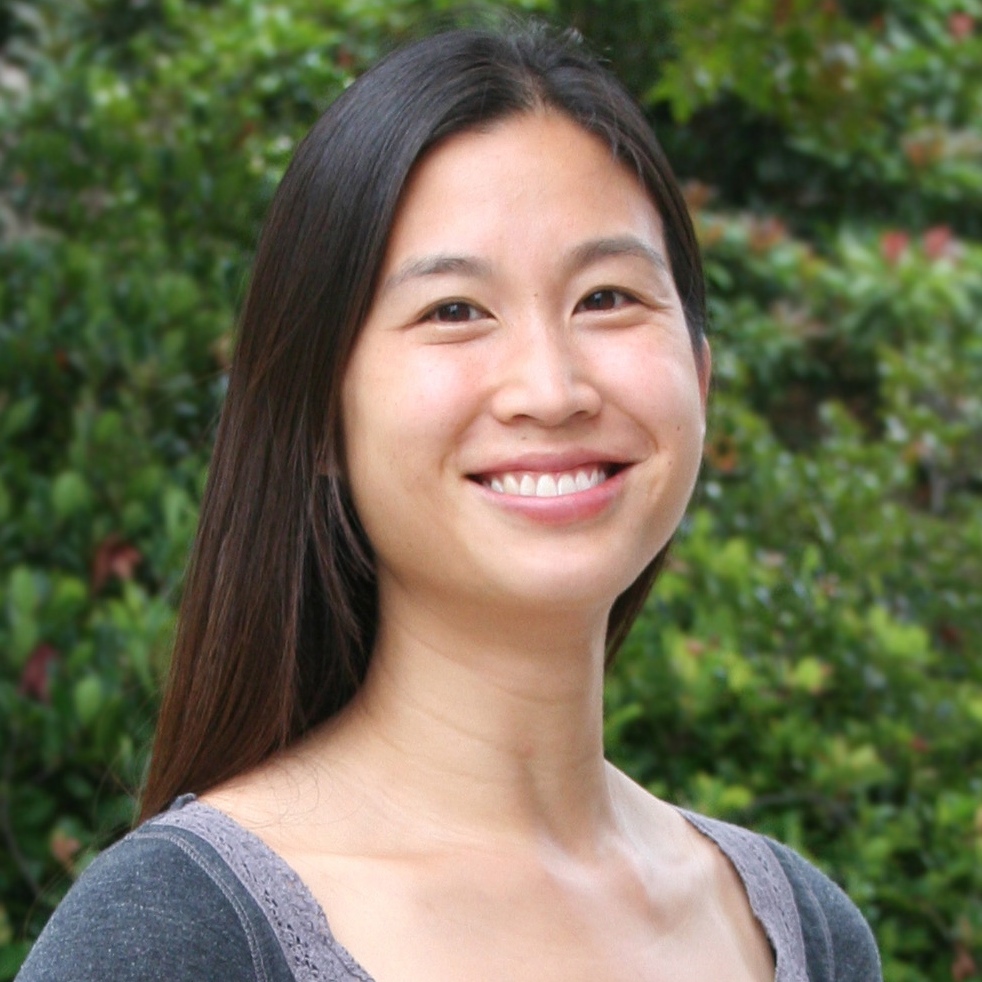
Suzanne R. Lee
Post-Doctoral Fellow
(Ph.D.)
Alumni
Cellular and Molecular Medicine
l1kurian at ucsd.edu
Degrees
Ph.D. Molecular and Cellular Biology, University of California, Berkeley, 2008
B.A. Biological Chemistry, Wellesley College, 1998
Summary
Suzanne Lee received her B.A. in Biochemistry at Wellesley College, Massachusetts in 1998, worked as a Research Assistant at Harvard Medical School until 2001, and received her Ph.D. in Molecular and Cellular Biology at the University of California, Berkeley in 2008. Her graduate work with Dr. Kathleen Collins focused on the identification of small non-coding RNAs (sRNAs) and their biogenesis in a model eukaryote, the ciliate Tetrahymena thermophila. Through this work, Dr. Lee discovered two distinct RNAi pathways that function separately for post-transcriptional gene silencing and developmentally induced DNA elimination. In addition, she identified a previously unknown response to essential amino acid starvation that induces tRNA cleavage and degradation. Through purification and characterization of two complexes containing the Tetrahymena RNA-dependent RNA polymerase (RdRP), Dr. Lee outlined a sRNA biogenesis pathway that involves coupling between RdRP and Dicer and specificity conferred by terminal U-transferases (Tutases). As a post-doc (joint with Gene Yeo and Jens Lykke-Andersen), she is interested in elucidating the roles that ribonucleoprotein complex (RNP) remodeling and modification play in the regulation of mRNA expression and stability. Specifically, Dr. Lee’s current research is focused on Upf1, an RNA helicase that functions in Nonsense-Mediated Decay, and the human Tutase/non-canonical poly(A) polymerase family.
Publications
Lee SR, Pratt GA, Martinez FJ, Yeo GW , Lykke-Anderson J . ( * co-corresponding) Target discrimination in nonsense-mediated mRNA decay requires Upf1 ATPase activity. Molecular Cell, 2015 [PDF]
Lee SR and Lykke-Andersen J. Emerging roles for RNP modification and remodeling in controlling RNA fate. Trends in Cell Biology. 2013; in preparation.
Couvillion MT, Lee SR, Hogstad B, Malone CD, Tonkin LA, Sachidanandam R, Hannon GJ, and Collins K. Sequence, Biogenesis, and Function of Diverse Small RNA Classes Bound to the Piwi-family Proteins of Tetrahymena thermophila. Genes and Development. 2009; 23(17):2016-32.
Lee SR, Benjamin-Talsky K., Collins K. Distinct sRNA biogenesis pathways are linked through the associated proteins of a single RNA-dependent RNA polymerase. RNA. 2009; 15(7):1363-74.
Coyne RS, Thiagarajan M, Jones KM, Wortman JR, Tallon LJ, Haas BJ, Cassidy-Hanley DM, Wiley EA, Smith JJ, Collins K, Lee SR, Couvillion MT, Liu Y, Garg J, Pearlman RE, Hamilton EP, Orias E, Eisen JA, Methé BA. Refined annotation and assembly of the Tetrahymena thermophila genome sequence through EST analysis, comparative genomic hybridization, and targeted gap closure. BMC Genomics. 2008; 9:562.
Lee SR, Collins K. Physical and functional coupling of RNA-dependent RNA polymerase and Dicer in the biogenesis of endogenous siRNAs. Nature Structural and Molecular Biology. 2007; 14(7):604-10. - Highlighted by Sheikhatter, Molecular Cell. 2007; 27(4):519-20.
Lee SR, Collins K. Two classes of endogenous small RNAs in Tetrahymena thermophila. Genes and Development. 2006; 20(1):28-33.
Eisen JA, Coyne RS, Wu M, Wu D, Thiagarajan M, Wortman JR, Badger JH, Ren Q, Amedeo P, Jones KM, Tallon LJ, Delcher AL, Salzberg SL, Silva JC, Haas BJ, Majoros WH, Farzad M, Carlton JM, Smith RK, Garg J, Pearlman RE, Karrer KM, Sun L, Manning G, Elde NC, Turkewitz AP, Asai DJ, Wilkes DE, Wang Y, Cai H, Collins K, Stewart BA, Lee SR, Wilamowska K, Weinberg Z, Ruzzo WL, Wloga D, Gaertig J, Frankel J, Tsao CC, Gorovsky MA, Keeling PJ, Waller RF, Patron NJ, Cherry JM, Stover NA, Krieger CJ, Del Toro C, Ryder HF, Williamson SC, Barbeau RA, Hamilton EP, Orias E. Macronuclear Genome Sequence of the Ciliate Tetrahymena thermophila, a Model Eukaryote. PLoS Biology. 2006; 4(9).
Lee SR, Collins K. Starvation-induced cleavage of the tRNA anticodon loop in Tetrahymena thermophila. Journal of Biological Chemistry. 2005; 280(52):42744-9.
Lee SR, Wong JM and Collins K. Human telomerase reverse transcriptase motifs required for elongation of a telomeric substrate. Journal of Biological Chemistry. 2003; 278(52):52531-6.
Lee SR, Ramos SM, Ko A, Masiello D, Swanson KD, Lu ML, and Balk SP. AR and ER interaction with a p21-activated kinase (PAK6). Molecular Endocrinology. 2002; 16(1):85-99.
Cheng S., Brzostek S, Lee SR, Hollenberg AN and Balk SP. Inhibition of the dihydrotestosterone-activated androgen receptor by nuclear receptor corepressor. Molecular Endocrinology. 2002; 16(7):1492-501.
Newcomb EW, Cohen H, Lee SR, Bhalla SK, Bloom J, Hayes RL, and Miller DC. Survival of patients with glioblastoma multiforme is not influenced by altered expression of p16, p53, EGFR, MDM2 or Bcl-2 genes. Brain Pathology. 1998; 8(4):655-67.